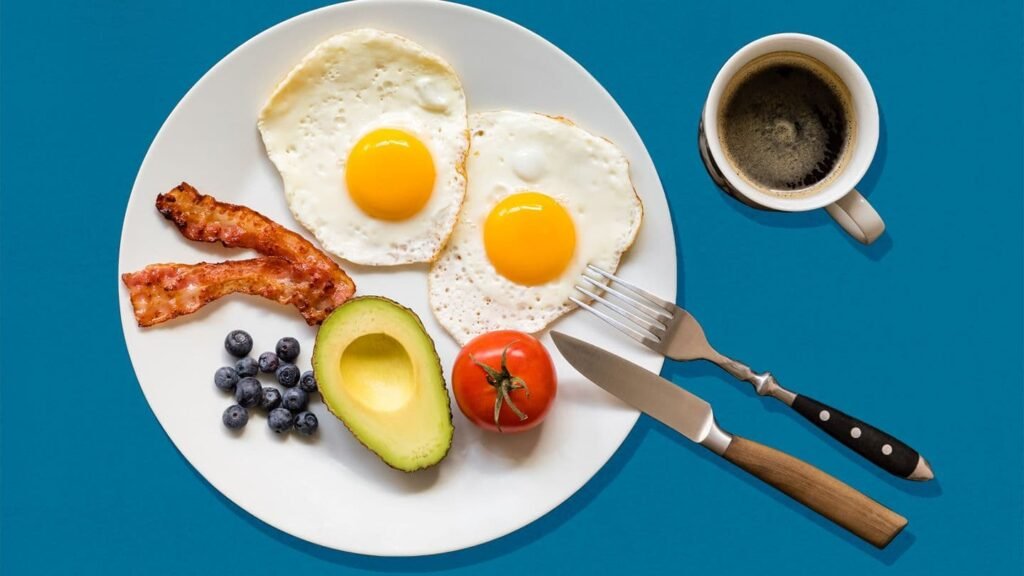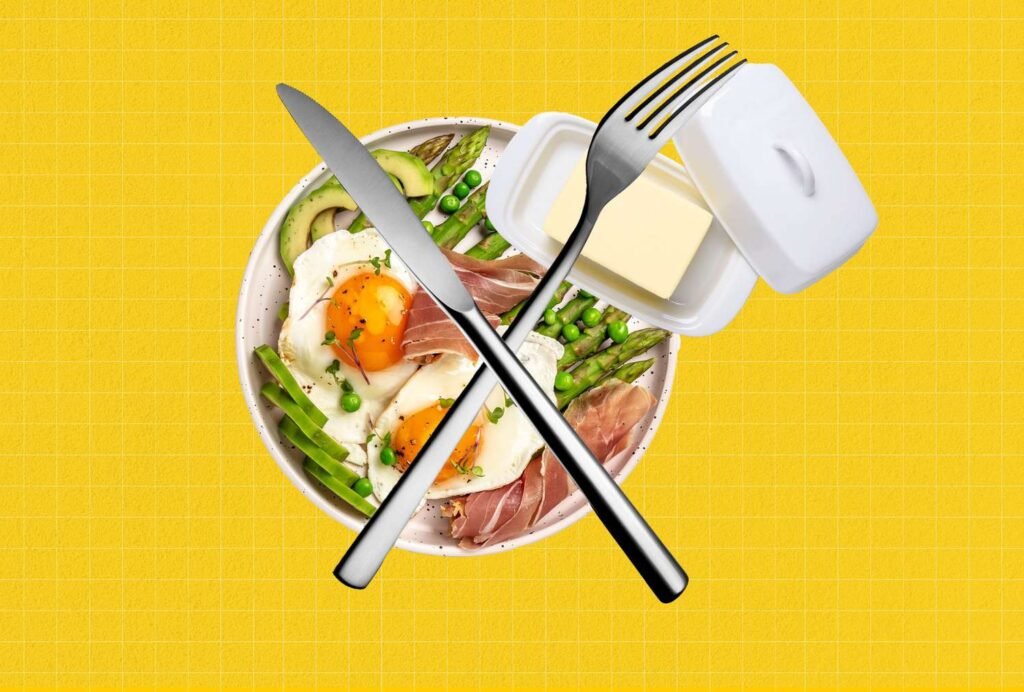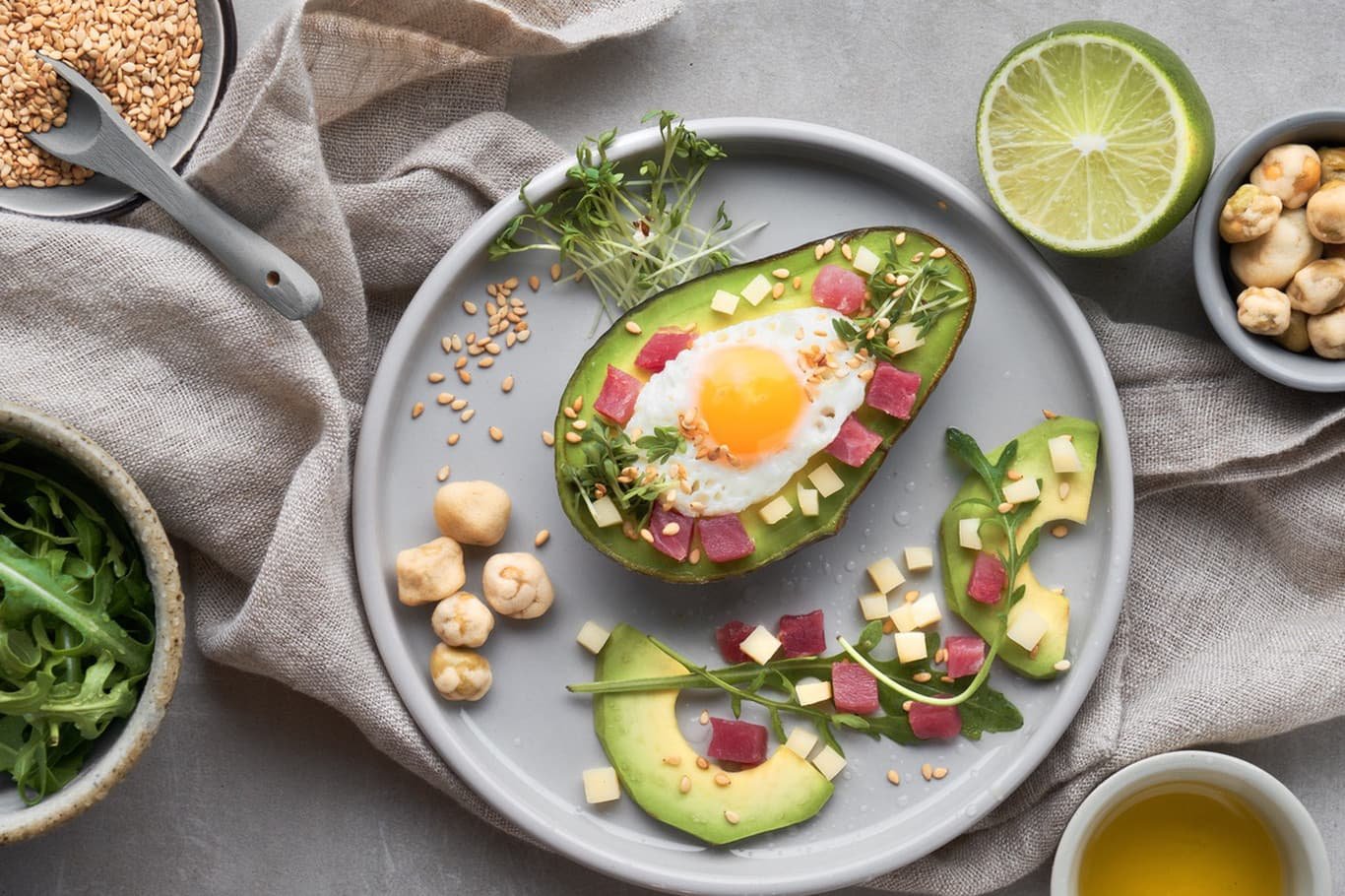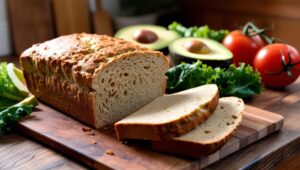Table of Contents
ToggleThe keto diet has become a big hit in recent years. But what is it, and how can it change your health for the better? Get ready to learn about the keto diet and its many benefits.
Are you looking to boost your fat-burning and live healthier? Let’s dive into the keto diet world. It might just be the answer to your weight loss and wellness goals.
Key Takeaways
- The keto diet is a low-carb, high-fat eating plan that puts the body into a state of ketosis, allowing it to burn fat for fuel.
- Adopting a ketogenic lifestyle can offer a range of benefits, including weight loss, improved blood sugar control, and enhanced cognitive function.
- Mastering the proper macronutrient ratios is crucial for successfully following the keto diet.
- Incorporating keto-friendly foods, such as healthy fats and high-quality proteins, is essential for maintaining a balanced and sustainable ketogenic diet.
- Properly managing potential side effects and understanding the unique considerations for those with specific health conditions can help ensure a smooth and effective keto journey.

What is the Keto Diet?
The keto diet is a plan that focuses on low carbs and high fats. It helps your body enter a state called ketosis. In ketosis, your body uses fat for energy instead of carbs. This change can lead to many health benefits for those living a ketogenic lifestyle.
Understanding Ketosis
Ketosis happens when your body uses fat for energy because it doesn’t have enough carbs. It produces ketones, which can be used as fuel. To stay in ketosis, the keto diet limits carbs to 20-50 grams a day. It also increases fat and moderate protein.
Benefits of a Ketogenic Lifestyle
Staying in ketosis with a low-carb diet has many benefits, including:
- Effective weight loss and fat burning
- Improved blood sugar control and insulin sensitivity
- Increased energy levels and mental focus
- Reduced inflammation and risk of certain chronic diseases
But, the keto diet might not work for everyone. Always talk to a healthcare professional before changing your diet.
“The keto diet is a powerful tool for improving metabolic health and potentially aiding in weight loss, but it’s not a one-size-fits-all approach. It’s crucial to understand the science behind it and how it can be tailored to your individual needs.”
Get Free keto cookbook ( +60 amazing keto recipes).
Keto Diet Macronutrient Ratios
To stay in ketosis, you need to manage your macronutrients well. The right mix of carbs, proteins, and fats is key for the keto diet’s benefits.
The keto diet suggests a specific balance:
- Carbohydrates: 5-10% of total daily calories
- Proteins: 20-25% of total daily calories
- Fats: 65-75% of total daily calories
This mix helps your body burn fat instead of carbs. By eating fewer carbs and more fats, you enter a fat-burning state. This leads to many health perks of the keto diet.
| Macronutrient | Keto Diet Ratio | Non-Keto Diet Ratio |
|---|---|---|
| Carbohydrates | 5-10% | 45-65% |
| Proteins | 20-25% | 10-35% |
| Fats | 65-75% | 20-35% |
Knowing and sticking to these keto macros is key for a successful low-carb eating plan. It helps you reach the metabolic state of ketosis.
Keto-Friendly Foods
Starting the keto lifestyle means eating foods that help your body burn fat. At the core of the keto diet are healthy fats and top-notch keto protein sources. Knowing which foods to eat helps you make tasty meals that keep you full of energy and on your keto path.
Healthy Fats
Healthy fats are key to the keto diet. They give you long-lasting energy, help with hormone balance, support brain work, and boost overall health. Here are some top keto-friendly fat sources:
- Avocados
- Olive oil
- Coconut oil
- Nuts and seeds
- Fatty fish like salmon and mackerel
- Grass-fed butter and ghee
Proteins on Keto
Protein is vital on the keto diet, helping with muscle growth and repair. Choose high-quality, low-carb keto protein sources for the best results. Great keto protein picks are:
- Grass-fed beef and bison
- Poultry (chicken, turkey, etc.)
- Eggs
- Fatty fish like salmon and sardines
- Nuts and seeds
- Tofu and tempeh (for vegetarians and vegans)
With these keto-friendly foods, you can make tasty meals that help your body enter ketosis. This leads to weight loss, more energy, and better health.
Try some of the best keto recipes …
Non-Keto Foods to Avoid
When you’re on a ketogenic diet, it’s key to avoid certain foods. These foods are high in carbs and sugar. They can stop your body from staying in ketosis, the fat-burning state the keto diet aims for.
To stay on track with your keto diet, watch out for these foods to avoid on keto:
- Grains and starches: Bread, pasta, rice, cereal, and potatoes are all high in carbs and should be limited or avoided.
- Carb-heavy foods like legumes, root vegetables, and most fruits (with the exception of berries) can also stop ketosis.
- High-sugar foods such as candy, pastries, soda, and some dairy products like ice cream should be strictly limited.
Knowing which non-keto foods to avoid helps you make better choices. This way, you can succeed on the ketogenic diet and enjoy its many benefits.
| Food Category | Keto-Friendly Examples | Non-Keto Foods to Avoid |
|---|---|---|
| Grains | None | Bread, pasta, rice, cereal |
| Starchy Vegetables | Leafy greens, broccoli, cauliflower | Potatoes, corn, peas |
| Fruits | Berries (e.g., blueberries, raspberries, strawberries) | Bananas, apples, oranges, grapes |
| Sweets | Dark chocolate (in moderation) | Candy, baked goods, ice cream |
By being mindful of these non-keto foods and choosing better options, you can succeed on the ketogenic diet. You’ll enjoy its many benefits.
Meal Planning and Preparation
Following the keto diet doesn’t have to be hard. With some planning and prep, you can make tasty keto recipes and keto snacks. These will help you stay on track and feel great on your low-carb journey.
Keto Recipes and Snack Ideas
Planning your meals is key to doing well on the keto diet. Start by filling your kitchen with keto-friendly items like healthy fats, high-protein foods, and low-carb veggies. Then, look for keto recipes that fit easily into your weekly meals.
- Grilled salmon with roasted Brussels sprouts and avocado
- Cauliflower rice stir-fry with chicken and broccoli
- Zucchini noodles with pesto and grilled shrimp
- Keto-friendly snacks like hard-boiled eggs, nut butter, and cucumber slices with cream cheese
Prepping your keto meal prep in advance makes for easy, nutritious meals. These meals will keep you full and energized all day.
| Keto-Friendly Ingredients | Keto Recipes | Keto Snacks |
|---|---|---|
| Avocado, olive oil, nuts, seeds, fatty fish, eggs, meat, poultry, low-carb vegetables | Grilled salmon, cauliflower rice, zucchini noodles, crustless quiche | Hard-boiled eggs, nut butter, cucumber slices, celery sticks with cream cheese |
“Meal planning is the secret to sustainable keto diet success. With a little preparation, you can enjoy a variety of delicious, nutrient-dense meals that keep you feeling satisfied and on track.”
Keto Diet and Weight Loss
The ketogenic diet is becoming more popular for losing weight. It’s a low-carb, high-fat diet that makes the body use fat for energy instead of glucose from carbs. This can lead to significant weight loss for many people on the keto diet.
The keto diet is great for weight loss because it helps you eat less. When your body is in ketosis, it makes ketones. These can help you feel less hungry. So, you might eat fewer calories without feeling like you’re missing out.
Also, the ketogenic weight loss method helps keep your muscles while burning fat. Unlike some diets, it doesn’t make you lose both muscle and fat. Keeping your muscle helps your body burn more calories, even when you’re not active. This supports fat burning and weight loss.
| Benefit | Description |
|---|---|
| Appetite Suppression | The production of ketones can act as natural appetite suppressants, leading to a reduced calorie intake. |
| Muscle Preservation | The keto diet can help preserve lean muscle mass while promoting the burning of stored body fat. |
| Sustained Energy | The body’s shift to using fat as the primary fuel source can provide a steady, sustained energy supply. |
While the keto diet can help with weight loss, it’s important to do it right. Talking to a healthcare professional or dietitian can make sure the ketogenic weight loss plan fits your needs. This way, you get the most benefits and avoid any risks or side effects.

Exercise on the Keto Diet
The keto diet is famous for burning fat. But, adding exercise boosts its effects. Keto workouts keep you energized, help build muscle, and aid in losing weight. Let’s look at the best exercises for a low-carb, high-fat diet.
Workout Routines for Keto Dieters
Choosing the right exercises is key on the keto diet. Here are some top workouts for keto followers:
- High-Intensity Interval Training (HIIT): HIIT, like sprints and burpees, burns fat and saves muscle. These quick, intense workouts fit well with the keto diet.
- Strength Training: Lifting weights and doing bodyweight exercises builds lean muscle. This is crucial for a good keto workout plan.
- Low-Impact Cardio: Cycling, swimming, and easy aerobics are great for the heart without using up glycogen fast.
It’s vital to pay attention to your body when working out on keto. You might feel less energetic at first. So, start slowly and increase the intensity as you get fitter.
| Workout Type | Benefits for Keto Dieters |
|---|---|
| HIIT | Efficient fat-burning, muscle preservation |
| Strength Training | Lean muscle building and maintenance |
| Low-Impact Cardio | Cardiovascular health without glycogen depletion |
Adding these keto workouts to your routine helps with weight loss, boosts energy, and brings many benefits of the ketogenic diet.
Potential Side Effects and How to Manage Them
Starting a keto diet means you might face some side effects at first. These side effects are often called the “keto flu.” They happen when your body switches to using fat for energy instead of carbs.
Some common keto side effects are feeling tired, having headaches, muscle cramps, stomach problems, and trouble sleeping. These symptoms usually show up in the first few weeks. They mean your body is adjusting to the new way of fueling.
To help with the keto flu, try these tips:
- Drink lots of water and electrolyte-rich drinks like bone broth or low-sugar sports drinks.
- Eat more magnesium, potassium, and sodium to help with muscle cramps.
- Get enough rest and keep stress low, as sleep helps your body adjust to ketosis.
- Slowly cut down on carbs before starting a strict keto diet to ease the keto flu.
These side effects will go away as your body gets used to the keto diet, usually in a few weeks. By taking steps to manage the keto flu, you can make the switch to a low-carb life easier.
“The key to managing keto side effects is to be patient and persistent. With the right approach, you can power through the initial adaptation period and reap the long-term benefits of a ketogenic lifestyle.”

| Common Keto Side Effects | Management Strategies |
|---|---|
| Fatigue | Stay hydrated, replenish electrolytes, get plenty of rest |
| Headaches | Stay hydrated, increase magnesium and sodium intake |
| Muscle Cramps | Increase potassium and magnesium intake |
| Digestive Issues | Introduce new foods slowly, stay hydrated, consider probiotics |
| Sleep Difficulties | Manage stress, maintain a consistent sleep schedule |
Keto Diet for Specific Health Conditions
The ketogenic diet has shown promising results for more than just weight loss. It can help manage health conditions like type 2 diabetes, epilepsy, and polycystic ovarian syndrome (PCOS).
Keto for Diabetes
For those with type 2 diabetes, the keto diet can be a powerful tool. It reduces carbs and puts the body into ketosis. This can improve insulin sensitivity and lower the need for medication.
In some cases, it can even help reverse type 2 diabetes.
Keto for Epilepsy
The ketogenic diet is a well-known treatment for epilepsy, especially in children. Its high-fat, low-carb diet can reduce seizures and might avoid the need for medication. Researchers think the diet’s metabolic changes help control seizures.
Keto for PCOS
Polycystic ovarian syndrome (PCOS) is a hormonal disorder that causes irregular periods, infertility, and weight gain. The keto diet might be a treatment option for PCOS. It could help manage insulin levels and reduce inflammation, which are important for PCOS.
| Health Condition | Potential Benefits of Keto Diet |
|---|---|
| Type 2 Diabetes | Improved blood sugar control, reduced need for medication, possible reversal of the condition |
| Epilepsy | Reduced frequency and severity of seizures, often without the need for pharmaceuticals |
| PCOS | Regulation of insulin levels, reduction of inflammation, potential improvement of symptoms |
While the keto diet looks promising for these conditions, it’s crucial to talk to a healthcare professional before starting. This is especially true if you have any pre-existing health issues.
Conclusion
This guide has shown you how the keto lifestyle can change your weight loss and health journey. By eating more fats and fewer carbs, you can enter ketosis. This brings many benefits to your health.
Benefits include more energy, clearer thinking, less inflammation, and better blood sugar control. The keto diet can truly change your life. It’s a great way to lose weight or live a healthier, low-carb life.
Starting a healthier life is a journey that never ends. With the right mindset and dedication, the keto diet can be with you for life. It’s a proven way to improve your health and well-being. Start your keto journey now for a happier, healthier life.
FAQ
What is the keto diet?
The keto diet is a plan that focuses on eating low-carb and high-fat. It helps the body enter a state called ketosis. In this state, the body uses fat for energy instead of carbs.
How does the keto diet work?
By cutting carbs to less than 50 grams a day, the keto diet puts your body into ketosis. This makes your body burn fat for energy instead of carbs.
What are the benefits of a ketogenic lifestyle?
Eating keto can lead to weight loss and better blood sugar control. It can also increase energy and lower the risk of chronic diseases like type 2 diabetes and heart disease.
What are the optimal macronutrient ratios for the keto diet?
Aim for 70-80% healthy fats, 15-20% protein, and 5-10% carbs on the keto diet. This balance helps keep you in ketosis and supports fat burning.
What are some keto-friendly food options?
Good keto foods include healthy fats like avocado and nuts. Also, eat high-quality protein from fatty fish, eggs, and meat. Don’t forget to add low-carb veggies like leafy greens and broccoli.
What foods should I avoid on the keto diet?
Stay away from high-carb foods like bread, pasta, and sugary snacks. Also, limit processed and sugary foods.
How can I meal plan and prepare for the keto diet?
Plan your meals and prep in advance for keto success. Create a weekly meal plan and cook keto-friendly recipes in batches. Keep keto snacks ready for when you need them.
How can the keto diet support weight loss?
The keto diet helps you lose weight by putting your body into a fat-burning state called ketosis. By using fat as your main energy source, you’ll burn more body fat.
What types of exercise are recommended on the keto diet?
Try strength training, high-intensity interval training (HIIT), and low-intensity cardio for keto-friendly workouts. These exercises help support your body’s fat-burning metabolism.
What are some potential side effects of the keto diet, and how can they be managed?
Side effects like the “keto flu” can include fatigue and headaches. To manage these, stay hydrated, replenish electrolytes, and ease into a low-carb diet.
Can the keto diet be beneficial for specific health conditions?
Yes, the keto diet may help with type 2 diabetes, epilepsy, and PCOS. But talk to a doctor before starting, especially if you have health issues.





